Furnace Repair. 19 Common Furnice Problems (And How To Fix Them)
- By Bahama Air
- •
- 23 Sep, 2018
- •
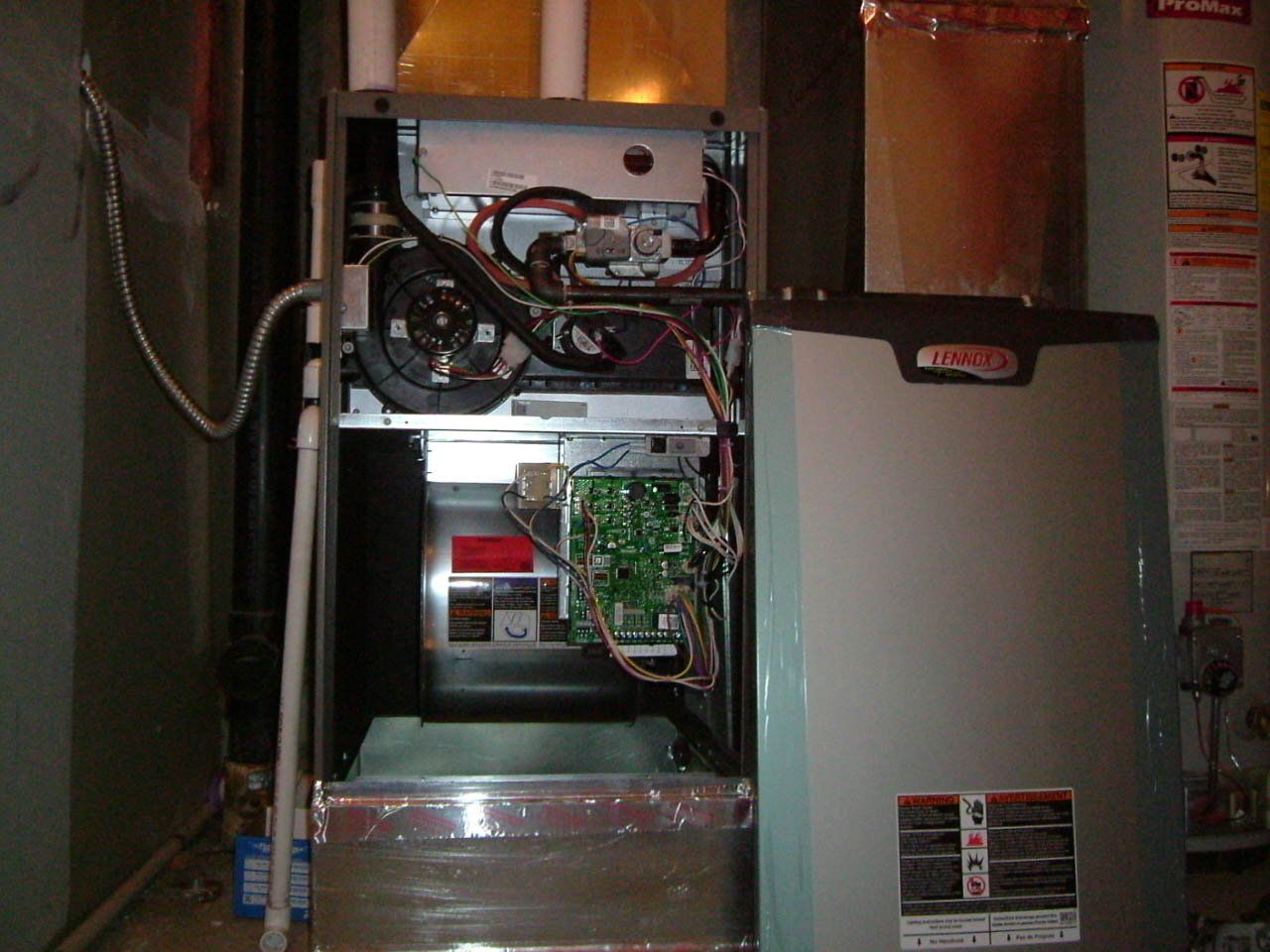
There is nothing worse than waking up cold in the middle of the night.
It's one thing if you just need to pull the covers up. It's a whole different issue if your furnace is working poorly or not working at all.
With a little do-it-yourself experience, you can troubleshoot and repair your furnace yourself. Your best bet though, is to have a maintenance check list for your heating system to avoid the problem.
Today I have something that will make you feel like you have the knowledge to tackle some furnace repairs:
19 common furnace problems and how to fix them right now.
Whether you have a conventional gas furnace or a high efficiency gas furnace understanding how your furnace/heating system works is important. You need to understand the basic workings of the appliance so you know what to look for when there is something wrong.
Let's take a look at a conventional furnace and tips to solve its more common problems. (If you feel uncomfortable with any of these do-it-yourself steps, then make a service call to a trusted professional. Saving a few dollars is not worth the uncertainty or a dangerous event involving the furnace.)
Problem 1
Check Your Thermostat to make sure it's ON
It may sound silly, but check the thermostat to ensure it is set on "heat" and that it is set at least five degrees above room temperature. You might be surprised how many service calls are made without checking this!
Here are a few thermostat checks to conduct yourself:
Step 1: Check the battery on the thermostat. You may need to change the batteries on your thermostat. If your home's thermostat unit runs on batteries, be sure you are changing them at least once a year, or as needed.
Some thermostats are wired to the house’s electrical system, while others use batteries. How is yours powered? Sometimes those that use batteries will flash a low-battery symbol when they need a replacement.
Step 2: Open the thermostat and gently blow any dust or debris that may have clogged it.
Step 3: Make sure the date and time is correct on electronic or programmable models - the system may be on a timer.
Step 4: Check the breaker. If on, turn off the breaker and check the fuse for the furnace.
Problem 2
Furnace is Not Producing Heat - Try to Reset Home Circuit Breaker
There are any number of minor reasons why this could occur. First, confirm that the thermostat is set to "Heat." Then, try moving the dial up or down a few degrees to check if a noticeable difference is felt.
If there is no result, check to see if perhaps a circuit breaker or fuse was tripped or blown.
How to Test Home Breakers:
Go to your home’s breaker panel and look for the circuit that controls the furnace. You’re looking to see whether it’s thrown to the “Off” position, or whether it’s in the middle.
1. Manually test the breaker. Flip it back and forth.
2. Make sure it is staying in the "On" position.
This will reset the breaker. If this does not do the trick, you have a problem with either the wiring in the circuit or the circuit breaker itself. If you have a digital multimeter the next steps are for you:
How to Test Home Breakers With a Digital Multimeter
Problem 3
Furnace is Not Producing Enough Heat - Check and Change Your Clogged Filter
A furnace that struggles to produce heat is a different matter from one that has somehow stopped working.
In the case of a poor-performing furnace that doesn't heat the home sufficiently, first ensure that the air filter is clean and in good condition, if not new.
Check and Change Your Clogged Filter
This is a simple but essential part of furnace maintenance. One of the most common reasons to have a furnace not working is a clogged filter. It also happens to be the easiest maintenance chore.
Replacing your furnace filter regularly is a quick and simple task, and goes a long way in protecting HVAC components and improving your inside air quality.
- Locate your filter - Some furnaces have their filter in the intake. This most likely looks like a grate in a floor, ceiling or wall. Other filters reside in the furnace itself.
- Check your filter - You can tell if the time has come to change it by holding it up to the light. If no light shines through, the filter needs changing. A dusty, dirty smell from the vents when the blower turns on is another good sign you should change your furnace filter.
- Replace your filter - Make sure your furnace is turned off. No air should be coming out. Check the direction your filter points. Filters are made to trap matter blown from one direction. Installing your filter upside-down can reduce its effectiveness.
Cleaning the debris that builds up on your filters will aid with the flow of air. When your air filter is clogged, your air handler must work harder to compensate for the blockage of air flow. In addition to driving up your utility bill, the reduced air flow through your heating and cooling system can cause your heat exchanger to overheat and shut off too quickly.
"Filters clean the air headed into the furnace and the heated air sent back into the house. A dirty, clogged filter limits the airflow, eventually causing heat and pressure to build up in the furnace.
Newer, more efficient furnaces are sensitive to the problem and will often shut down before a dirty filter causes more trouble. For other units, the furnace will continue to run but with less heat output and reduced efficiency."
Problem 4
Safety Switch on Furnace Door
If your furnace is not operating, one of the first things you should do is check the safety switch on the furnace door. A furnace door safety switch prevents the fan and burner from coming on while the access panel is removed.
Furnaces have a safety switch that pops out when the door is removed. The door must be in place for the switch to be activated and for the furnace to operate.
If you discover you need to install a new safety switch, follow the step by step instructions on "How to Install a Furnace Door Safety Switch."
Step 1: Shut the power off
Step 2: Prep the blower door
Step 3: Wire the safety switch
Step 4: Check and test the installation
Problem 5
Keep the Area Around Your Furnace Clean and Unobstructed
This may seem like an obvious tip, but sometimes homeowners with busy lives forget to pay attention to areas of their home like the basement.
A basement can become cluttered, which in turn can lead to the area around the furnace being filled with miscellaneous possessions and debris. Not only does a clean furnace function better, it looks better.
Avoid storing flammable substances or materials near your furnace. Crowding your furnace can lead to unexpected fires, significant damage to your home and danger to your family and pets.
However convenient it may seem to simply “store it there” for the summer, consider the chance that you may well forget any items you’ve left on or near your furnace. Don’t take chances, give your furnace the room it needs to operate safely.
Additionally, vacuum and clean regularly around your furnace. While you may have removed any and all flammable items from the area, remember that dust and lint can build up and create a fire hazard. An excess amount of dust and lint can also cause your filter to become clogged sooner than usual, requiring more frequent replacement.
Problem 6
Look at the Burner Flames
The most common failures associated with your burners can come from contamination. You will want to inspect your burners to make sure they are free from debris.
You want to make sure your burners are clean and one way to do this is to look at the flames.
Are they blue and even?
Then your burner is likely clean. If they are yellow, you probably have dirty burners. You can clean your burners with a vacuum cleaner; just make sure to turn the power and the gas off first. Another area you should clean with a vacuum cleaner is the region around the blower.
Dust can accumulate during the summer. Therefore, it's very important to check and clean the furnace burners before the start of the colder seasons.
A combination of condensation and soot can cause burners to function improperly, and may cause other furnace problems as well. The burner assembly should be cleaned annually or replaced if the existing one is in poor condition.
Problem 7
Oil the Furnace Blower Once a Year
When preparing your furnace for winter, it is important to make sure all the components of your heating system are clean and in working order.
The furnace blower’s main function is to draw heat from the furnace and distribute it throughout the house. Keeping a furnace blower lubricated will extend the life of your furnace.
Here are 7 easy and detailed steps How to Oil a Furnace Blower Motor, courtesy of SFGate:
Step 1: Turn off the circuit breaker at the main electrical panel that supplies the furnace's power.
Step 2: Remove the furnace's access panel by detaching the screws with a screwdriver.
Step 3: Locate the blower motor assembly near the base of the furnace. Remove the bolts securing the blower motor to the furnace's main assembly with a wrench.
Step 4: Locate the set screw on the side of the blower motor housing. Detach the bolts. Pull the motor from the housing.
Step 5: Locate the oil ports on the motor and shaft.
Step 6: Squeeze 2 to 3 drops of oil into each port.
Step 7: Activate furnace. Blower motor should run better with the new oil.
The furnace blower motor plays a big role in how your heating system functions. It should be oiled once a year and it shouldn't make any unusual noises when started.
Problem 8
Check Your Limit Switch
A bad limit switch could cause the blower to run continuously, and as a result, it will significantly shorten the lifespan of the blower.
Having a technician replace the limit switch will quickly solve that problem.
How can I test whether my furnace issue is the limit switch or the thermostat?
"If the high limit switch was bad, the furnace should not fire. When the high limit switch trips, the flame/heating element will be shut off and the blower will continue to run to clear the heat. The blower will continue to run until either the system is reset, or the limit switch closes."
"Limit switches are normally closed, and they should always fail open. Which means when they go bad, or the temperature gets too high they open the circuit.
If the circuit is open, you'll want to replace the limit switch."
Problem 9
Check Your Electric Ignition or Pilot Control
Gas furnace operation can function with a pilot light or have electronic control, which eliminates the need for a constant flame.
A faulty ignition system such as those found on furnaces with a thermocouple, can significantly reduce the ability of the furnace to properly heat the home. Drafts or clogs in your heating system can result in your pilot light going out.
Many newer systems ignite electrically, rather than by a standing pilot light.
Action steps you can take yourself include:
Step 1: Turn the furnace power switch off and back on (the ignition may need to be reset).
Step 2: Turn off power and gas to the furnace to allow inspection of heating element. Do not touch the heating element, but if it looks cracked or damaged, you'll need to replace the igniter.
Step 3: With manual in hand for the furnace, go through the steps recommended by the manufacturer to troubleshoot operation. As with the pilot light, you can do damage to the system and your property if you skip steps or safety procedures during this task.
Step 4: Follow the directions and if it doesn’t work, call for service.
Problem 10
Heating or Rapid Cycling Problems
In the case of a furnace turning on and off again too quickly, many causes exist. As always, the first may be a dirty or worn-out air filter. If you haven’t replaced it within very recent memory, try doing so — it’s a quick and easy fix.
When to call a professional: If a new filter doesn't solve the problem, you may have a more serious situation. There may be an issue with the blower motor and belts, both of which require the service of a professional.
Problem 11
Furnace Does Not Blow Air
Problem 12
Gas Furnace Blower Runs Continuously
The blower is located between the return ductwork and the furnace. Cool air is sent by the blower into the heat exchanger and warmed before entering the plenum and then sent throughout your home by the supply ducts.
A constantly running furnace that doesn't shut off can be a sign of a needed repair. Check to ensure that your thermostat is not set to “continuous fan”.
Turn the temperature down to see if this measure solves the problem.
A gas furnace blower that does not turn off could also indicate a problem with a faulty limit control switch. (which may need resetting or replacing).
Problem 13
Noisy Furnace or Duct Work
Rumbling, squeaking and rattles aren’t normal. The sounds may indicate a mechanical problem, airflow reductions or a clogged burner.
Sometimes a furnace may be running fine, but loudly. If you can tell the noise is a result of the air running through the ductwork, one solution may be to insulate your ductwork to cut down on the noise.
If the actual furnace system is making odd noises, this can occur when the pilot light is improperly adjusted or the blower motor lubrication ports need oiling. There may also be an issue with the belts or even the burner.
What are the different noises coming from your furnace?
a. Pinging or popping sounds - could be thermal expansion- the ductwork expanding and contracting as it heats and cools.
b. Rattling noises - loose panels may need to be tightened.
c. Squealing noises - could be a belt that connects the motor to the fan slipped. Or the belt needs replacement.
d. Grinding sounds - probably time to call a furnace repair technician. The motor bearings need repair. (source)
The Spruce; a site dedicated to offering practical, real-life tips to help you create your best home; came up with their list of identifying furnace sounds.
Ranging from scraping, thumping, humming, banging and rumbling, they provide a list of common furnace related noises and their possible causes to better describe the problem to your technician.
Problem 14
Check Your Vents
Walk through the entire house and check the vents to ensure nothing is blocking them.
A curtain or piece of furniture may be obstructing the openings of one or more vents, preventing heat flow.
Problem 15
Flame Sensor Needs Cleaning
The flame sensor is a crucial safety feature on your gas heating equipment. It safeguards your furnace against the unsafe burning of fuel, and a dirty flame sensor may cause your furnace to function improperly.
Typically, the flame sensor comes in the form of a rod that can be found near the back of the furnace, right in the path of the burner.
How to Clean the Sensor:
Step 1: Turn off power to the furnace at the breaker box
Step 2: If possible, remove the sensor from the furnace
Step 3: Scrub the sensor gently to remove dust and other residues
Step 4: Reattach the sensor
Step 5: Resume power to the furnace
Over time, if the flame sensor is not cleaned appropriately, oxidation or carbon buildup can restrict the flame sensor’s ability to work properly, which can cause the furnace to malfunction.
"The way to determine if an unclean flame sensor is causing a furnace malfunction is to take a micro amp draw reading, which an expert furnace technician can provide you.
If a dirty flame sensor is the guilty party, the furnace expert will clean the sensor with steel wool. If dirt was the only factor, you will see a significantly higher amp reading. If the reading does not change, a technician will proceed with the furnace repair diagnostic process." What a Flame Sensor is and Why it Matters
Problem 16
Inspect Gas Line
Check the entire gas line from the main inlet to the furnace burners.
While standing at the furnace, follow the gas line. It may be closed, or the switch may have been turned off.
Check to see if your hot water tank is working. If not, it may be a gas supply issue to the house. The gas line should be set on "Open".
Also, if the furnace has a pilot light, check to see if it is lit. Sometimes, a pilot light can be extinguished in the off-season.
Re-lighting the pilot is a simple process. Instructions are usually posted on the side of the furnace.
If the pilot light does not stay on after a few attempts, you may need a repair from a professional.
Problem 17
Smelling Gas - Proceed With Caution
If you suspect a gas leak, and the odor is strong, you should immediately leave your home and contact your gas utility company.
A gas leak will effect the efficient operation of your gas furnace. But more importantly, it can be a very serious health hazard to you and your family.
Problem 18
Clean Leaves and Debris from Heat Pumps or Intake and Exhaust Vents
"If you have a furnace that vents out the side of the house, make sure nothing is blocking the intake or exhaust. If either of the pipes is covered with screen mesh (like window screen), replace it with 1/2-in.-mesh hardware cloth.
If ice is clogging one of the pipes, you have a bigger problem somewhere in the system. Clear it off and call a technician to find out why it's happening.
If you have a heat pump, clear away grass and leaves from the fins of the outdoor compressor unit. Before heating season starts, hose it down gently from the top to rinse dirt and debris out of the housing." source
Problem 19
Know the Age of Your Furnace
Furnaces are designed and built to last many years, but none of them keep running forever.
If your particular heating unit has reached or passed the manufacturer’s warranty period, you may not be getting all of the heating productivity that you’re paying for.
It might be time to replace your HVAC system.
CONCLUSION:
I know this article showed you how to fix some of the common furnace problems.
Have you experienced any of the do-it-yourself repairs?
Having your system inspected periodically, and at least as often as the manufacturer recommends, can prevent a minor repair from becoming a major endeavor.
Remember while attempting do-it-yourself repairs can be satisfying and cost effective, it is important to be sure that you have the skills before attempting any work on your furnace.
If the tips do not help you to detect or solve problems or if they are above your skill-level, you may need the services of a furnace repair professional.
It's so important to maintain seasonal cleaning and tune-ups for your HVAC system. It is a forgotten system until it stops working.
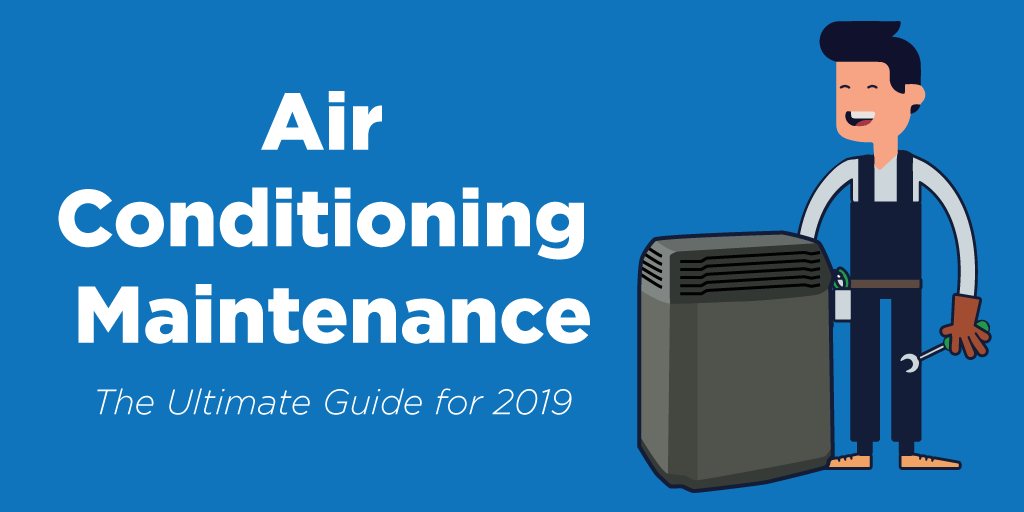
You rely on your air conditioning system to keep your home cool and comfortable, but in order for that to happen, your A/C system requires regular maintenance to function efficiently.
Just like any other home appliance, it's normal for your air conditioning unit to experience some wear and tear from regular use and develop mechanical problems at some point during its lifetime.
Keeping your system up and running smoothly requires proper attention to its maintenance and service needs. System maintenance can also save you money and headaches from unexpected breakdowns that can leave you sweaty and fuming!
If you are looking to keep your home comfortable (and who isn't?), then keeping your A/C running is a must.
Let's take a look at what you can do, and when you need to call in the pros, when it comes to air conditioner maintenance...
How Your Air Conditioner Works
If you recently moved from a home where you mostly used fans, window-mounted air conditioners, or are thinking of installing a central air unit, you may not be too familiar with the central A/C system. Don't worry... we can help.
Central air conditioning units operate in the same way that your refrigerator does, but on a larger scale. Essentially, your air conditioner quickly converts gas to liquid and back again using chemicals that move the heat in the air from inside your home to outside.
Why Does My A/C Need Maintenance?
Just as your car requires regular maintenance to run smoothly and properly, your A/C also requires regular care. Proactively taking care of your air conditioner not only extends the life of your unit, but it can also save you a substantial amount of money on repair and replacement costs. Something as simple as changing the air filter in your unit can prolong its efficiency as well as improve the air quality in your home.How to Shut Off Your A/C Power
When repairing or installing your A/C unit, it is important to turn off the power to your unit. Turning off your air conditioner's power not only protects your equipment and the unit itself, but also protects you from getting any type of electrical shock. Always check to see if you've successfully turned off your system by attempting to turn heating and cooling on from your existing thermostat.How to Clean Your Outdoor A/C Condenser Unit
Cleaning your condenser unit outside on a yearly basis will increase the efficiency of your air conditioner and protect your investment. This is an easy DIY cleaning project, but you can also hire a professional to clean your unit for you, if you don't have time. Cleaning the condenser is especially important if there are dandelions growing around your unit or an abundance of leaves or grass clippings.How to Level Your Outdoor A/C Condenser Unit
Moving your air conditioning unit can be a daunting task, but if the unit is not properly leveled, it may fail to function properly and could cause refrigerant leaks. Be sure to use a level to check your unit at least once a year, as the earth under your unit is constantly changing and settling.How to Clean Your Evaporator Coil
The Evaporator coils in your A/C unit are essential in cooling your home. Not only do they help cool things off, but they also remove the moisture in the air that causes that sticky humidity. Since these coils are typically moist from the condensation, they can easily collect dust and dirt and become dirty. Dirty coils prevent your central A/C unit from functioning efficiently, but they are also easy to clean.What if Your Condensate Drain Line is Clogged?
Remember that evaporator coil we talked about? In order to prevent all the moisture in that coil from living in your A/C unit, the condensate drain line removes that moisture from the unit. Since this drain line is almost always moist, it's a breading ground for mold and mildew which can cause the drain line to get clogged. This is one of the most common reasons a pro is called in to fix an air conditioner, which means cash out of your pocket.Changing Your Blower Filter
Just as your dressers and countertops collect dust, so does the air filter in your air conditioner. Imagine if you never dusted inside your home, it would get pretty stuffy and hard to breathe after a while, right? Well, that's exactly what's happening inside your air conditioner if you don't replace the filters regularly. You'd be surprised how much gunk and dust gets collected in a relatively short time. Fortunately, cleaning your air filter is an easy task and helps your unit run efficiently while also improving your air quality.Call Bahama Heating & Air Conditioningfor all your HVAC needs.
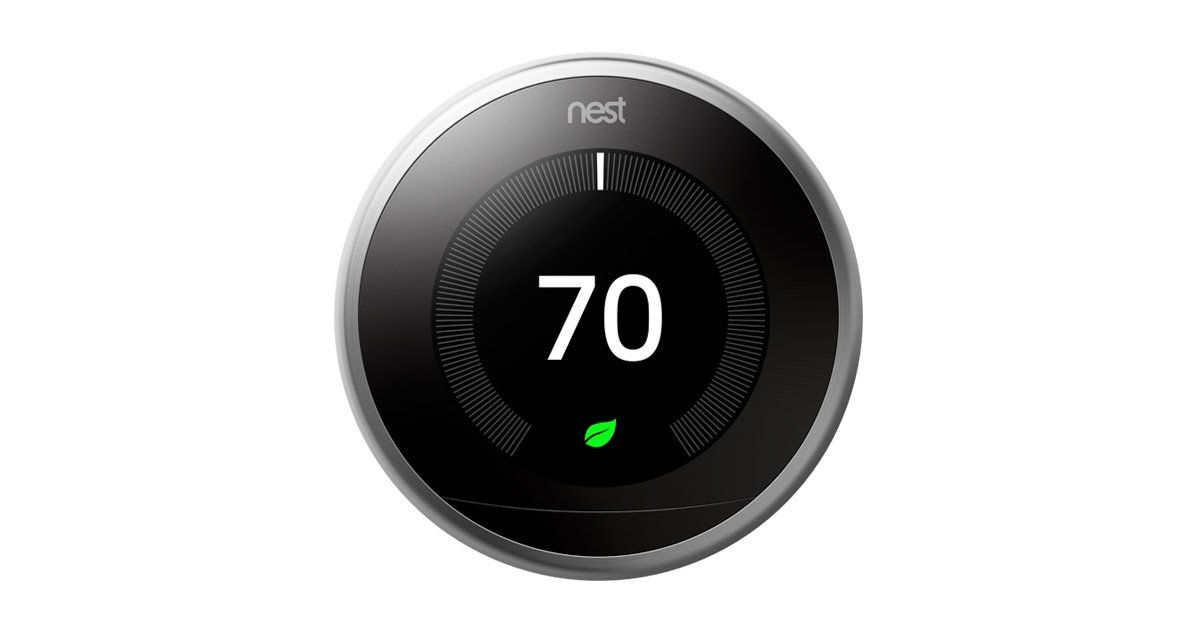
HVAC repair technicians are properly qualified to take care of anything that relates to installing, maintaining or repairing your heating, air conditioning and refrigeration systems. Our professionals have gone through rigorous training and certification and all our technicians and equipment installers are Certified, which involves demanding testing and indicates a solid understanding of the industry.
A few of the more common areas in which HVAC repair technicians can help you include:
- Installation —Having your HVAC systems installed by a professional is extremely important to prevent any future problems or needless repairs. Our professionals at Bahama Air Conditioning & Heating can also help you choose what size equipment is appropriate for your house. Selecting a system that is too large or small can impact efficiency and add to your energy bills.
- Maintenance —You’ve heard it time and again, but continued maintenance of your HVAC system is the simplest way to prevent future repairs and uphold efficiency. Ongoing check-ups help to make sure that your system has a longer life, performs correctly and provides your home (and energy bill) with the maximum efficiency possible.
- Repairs —If something appears to be not working right with your heating and cooling, a professional will examine the whole health of your system. It’s easy to hop on the internet and research information to find our own conclusions, but there could be an additional component or reason why your system isn’t working properly that isn’t clear or recognizable. Consider our own health concerns—you might check out your symptoms online to try and draw your conclusions, but it’s always best to make an appointment with a doctor to receive an expert opinion.
To be honest, an HVAC technician’s work goes beyond more than installation, maintenance and repair. Most people are increasingly spending more time inside the home, so indoor air quality, home energy savings and total comfort have become even more important. There are several choices and solutions when it comes to HVAC systems, and our experts will consult with you every step of the way and work with you to achieve your goals.
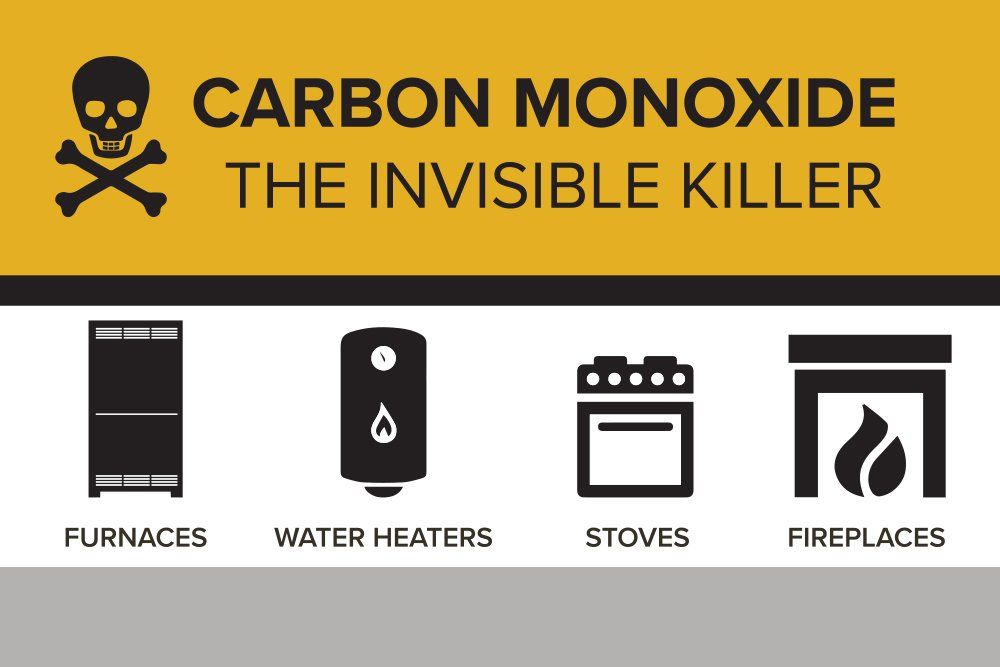
Carbon Monoxide is difficult to detect. It's been coined the "silent killer" for a reason. It doesn't have a smell, color, or taste.
It can be found in your home from your fireplace, gas ranges and furnaces. The build-up indoors can poison people and their pets who breathe it. In a five year span, 2010-2015, a total of 2,244 deaths resulted from unintentional carbon monoxide poisoning , with the highest number of deaths each year occurring in winter months.
As a licensed heating and air conditioning company , our commitment encourages us to share the consequences of this deadly gas and ways to help prevent carbon monoxide poisoning in your home.
Let's get started.
What is Carbon Monoxide?
Carbon monoxide (CO) is an odorless, colorless toxic flammable gas.
What is Carbon Monoxide Poisoning?
When you breathe CO, it harms the ability of your blood to transport oxygen. The poisoning is a result of not receiving the adequate oxygen... or asphyxiation.
Symptoms and Signs of Carbon Monoxide Poisoning
John Cunha, DO, FACOEP, an Emergency Medicine Physician, lists the CO symptoms from a headache, dizziness, and nausea to impaired judgment, visual changes and walking problems. The list is quite comprehensive.
If you suspect your symptoms are directly related to carbon monoxide, turn off the source (if you are aware of the source), move to fresh air and get away from your home as quickly as possible and call 911.
It is worth mentioning that carbon monoxide is slightly lighter than air, so it potentially rises. The scientific way of looking at it according to Healthy Building Science...
"CO indoors is usually generated from incomplete combustion (heat source) and therefore traveling in a warm air stream. Warm air is more buoyant and does rise."
What Can Cause this Deadly Gas in Your Home / What Causes a Leak?
Household appliances ranging from boilers, heating systems and gas fires can be sources of carbon monoxide gas. Even running your car engine in an enclosed space can cause CO.
Accidental exposure to blocked flues and chimneys, which prohibits the gas from escaping can cause toxic levels.
Treatments for Carbon Monoxide Poisoning
According to the Mayo Clinic, immediately breathing pure oxygen to replace the CO with oxygen in your blood is the first step in your road to recovery.
In severe cases, hyperbaric oxygen therapy rooms are used.
"This therapy involves breathing pure oxygen in a chamber in which the air pressure is about two to three times higher than normal. This speeds the replacement of carbon monoxide with oxygen in your blood."
Tips to Prevent Carbon Monoxide Poisoning
Tip 1
Inspect Your Chimney for Safety and Efficiency
Inspecting and cleaning fireplaces and chimneys is essential for safety and efficiency. A clogged chimney presents risks of carbon monoxide poisoning or fire.
wikiHow shows you exactly in 10 steps How to Inspect a Fireplace Chimney. You should be checking for any obstructions, such as bird nests or debris. Furthermore, you should also make sure there is no significant soot buildup, as it can be a dangerous fire hazard.
- Excess creosote, over 1⁄8 inch (0.3 cm) or 3 mm, can ignite in the flue and send flames shooting out the top of the chimney, even causing the home itself to catch on fire.
With a flashlight, inspect the flue damper to make sure it opens, closes, and seals properly.
You want to remove the dangerous, flammable creosote from inside the chimney. If your chimney hasn't been inspected in a long time, call a professional to check it and clean the ducts.
If you have a gas-burning fireplace, it needs an inspection as well. Houselogic has a step-by-step " How to Make Sure Your Fireplace & Chimney are Safe ".
For the homeowners that have a gas-burning fireplace they suggest to:
- Inspect the glass doors for cracks.
- Check the gas logs positioning.
- Turn gas off at the shut-off valve and test the igniter.
Any precautions and steps you take now will help your furnace work more efficient later.
Tip 2
Check Your HVAC Vents for Proper Airflow
Throughout the year, furniture is often moved around and new furniture is brought into the home. Double-check around your house to make sure that nothing is blocking your heating vents.
Blocked vents are not only useless since heat can't get out, but they can also drive your heating up. In addition, a blocked vent can result in an overheated furnace.
Check both your supply registers, heat blows out of these, and your return registers, the air is drawn into these.
Do you ever close vents in unused rooms to save money?
The Energy Vanguard Blog did an excellent and comprehensive job at explaining why you really shouldn't close those vents. They went on to clarify unintended consequences of closing your vents.
In a nutshell, it can do more harm than good. A few of the after-effects are:
- Increased duct leakage
- Comfort problems because of low airflow
- Cracked heat exchanger, with the potential for getting carbon monoxide in your home
- Condensation and mold growth in winter due to lower surface temperatures in rooms with closed vents
You can read the full article here: Can You Save Money by Closing HVAC Vents in Unused Rooms?
Tip 3
Install Carbon Monoxide (CO) Detectors and Alarms
Carbon monoxide detectors are a lot like smoke detectors. The difference - they detect levels of carbon monoxide rather than looking for smoke and fire.
You must consider installing CO detectors in your home. Because CO is both poisonous and odorless, it is vital that you ensure your home, family, and pets are safe from this toxin.
Safewise, home security experts, put together an awesome Carbon Monoxide (CO) Detector Buyers Guide. They cover the best detectors, from basic to smart devices, available on the market.
The guide also explains where to install and how to maintain your detector.
Also be sure to call a HVAC professional to investigate and resolve any issues.
Protect America, committed to providing every home with security solutions wrote a step-by-step guide on:
How to Test Your Smoke and Carbon Monoxide Detectors
Both alarms should be tested once a month at minimum or according to the manufacturer's instructions. The NFPA (National Fire Protection Association) warns consumers that the "actuation of your carbon monoxide alarm indicates the presence of carbon monoxide (CO) which can kill you."
NFPA also states the fact:
"A person can be poisoned by a small amount of CO over a longer period of time or by a large amount of CO over a shorter amount of time."
Again if you sense you're threatened by CO, be sure to call emergency services (fire department or 911) and immediately move to fresh air.
Tip 4
Schedule Regular Maintenance
Have your HVAC system and any other gas or oil burning system or appliance serviced by a qualified technician yearly.
The fumes from heaters and ovens, if not working properly or used the wrong way, can cause a life-threatening situation. A pre-season furnace cleaning and check-up by a trusted professional can alert you to potential problems or just confirm that your system is healthy and ready for winter.
A qualified technician will check for safety and operation, ventilation, and mechanical maintenance. With regular maintenance and a thorough annual inspection, a typical furnace will last for 20 years or more.
If you notice any strange odors or noises during the course of the winter, it may indicate a problem developing, and it should be addressed immediately to avoid total furnace failure or serious injury.
Tip 5
Replace Your Batteries Twice a Year
Make a commitment to change the batteries twice a year. Make it easy on yourself, whenever it's time to spring forward or fall back (change the time on your clocks), replace your batteries.
Tip 6
Don't Run Your Vehicle Inside Your Garage - Ever
Some people believe if the garage door is open, it's fine to run the car.
According to T.H. Greiner, Ph.D., P.E. Agricultural Engineer, "the extremely high concentrations of carbon monoxide produced by an engine can raise CO concentrations in a closed building so quickly that a person may collapse before they even realize there is a problem."
"Proven studies have shown CO concentrations reach the Immediately Dangerous to Life and Health (IDLH) concentration of 1,200 parts per million (ppm) in only 7 minutes when a small 5 horsepower gasoline engine is run in a 10,000 cubic foot room."
Iowa State University conducted a study and found warming up a vehicle for only 2 minutes can raise CO concentrations. If you need to warm your car, remove it from the garage before starting it.
Tip 7
Do Not Heat Your Home With Your Gas Oven
While it may seem like a handy alternative, never use your oven to heat your home. An overworked, unattended oven can cause an explosion, as it is simply not built to run for extended periods of time.
Deadly CO gas can be given off from the gas flame that is intended to heat the oven.
Tip 8
Be Cautious When Using Fuel-Burning Space Heaters
Space heaters require regular attention while in use. The maximum temperature of the unit should be regulated and all materials should be kept at least three feet away from the unit.
Bear in mind that space heaters account for approximately one-third of home heating fires and 80 percent of home heating-related deaths every year. Never forget to turn off portable heaters when leaving the house or going to bed.
Only use space heaters in well-ventilated areas. Any space heater (fuel or electric) can be a fire hazard if not used properly and should be used with caution.
Conclusion
Leading causes of carbon monoxide in your home can be from faulty furnaces, water heaters, stoves, and fireplaces. It's critical to take the necessary precautions to keep a carbon monoxide free home. It could be a simple venting problem. If left unchecked, it could escalate into a carbon monoxide problem.
Have your HVAC inspected and cleaned every year by a professional. With proper maintenance, your furnace will work more efficiently, and save you money on expensive energy costs and most importantly...
Keep your family safe.
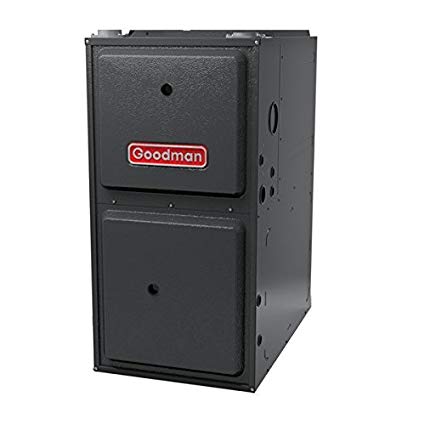
Is your furnace making strange noises? Or have you observed that your unit is blowing cold air when you’re expecting a comfortable blast of warm air? If so, it could be a indication that your HVAC equipment is about to fail amid this cold winter season. Here are some common warnings that you shouldn’t discount when it comes to your furnace:
Scraping Sound
If you hear a loud scraping sound that sounds like metal on metal, there is likely something amiss with the blower wheel. If you hear a sound like this, turn off your furnace immediately and call Bahama Air to investigate the furnace. There are numerous things that could be wrong with the blower wheel. First, it might just be loose and if the piece is not too damaged, can be tightened. Second, it might be that the blower wheel is broken and will require replacement. Or third, it might be that the motor mount is what broke, causing the complete blower assembly to shake uncontrollably.
Loud Bang When Furnace Starts
If there is a loud pop when your furnace kicks on, there are a couple of things that could be going on. Two regular culprits are a dusty furnace burner or ignitor. A dirty furnace burner or ignitor could keep the burners from igniting, causing gas to build up. When the gas finally does ignite, it will create the loud bang you hear. This could result in a safety problem, especially if one of these small explosions caused the heat exchanger to crack. Not only could that result in a carbon monoxide leak, but you would end up having to replace the heat exchanger, which could be very pricey.
Expanding and contracting air ducts can also create loud bangs after the heating system blower starts up. This is a common annoyance for homeowners with metal ducts. If your furnace is making the loud boom and it is produced by your air ducts, it could be a symptom of undersized ducts, obstructed vents, or a clogged air filter.
Whining Noise
If you hear a high-pitched noise, it could be the shaft bearings are in need of oil, there is an issue with the blower belt, or the blower motor is flawed. A seasonal furnace tune-up will help pinpoint these issues before they become substantial problems.
Cold Air Blowing From Heating System
There are a few reasons why your heating equipment could be emitting cold air. It might sound insignificant, but the thermostat is the first thing you want to consider. It’s the starting place for any furnace technician, too. Confirm the system is set to “auto” and not “on.” If the thermostat is set to “on,” your heating system will blow continuously, even when it isn’t heating the air being released, thus blasting cold air. Flipping it to “auto” will make sure the heating equipment only blows when it’s really heating the air.
You should also check your air filters. Typically air filters need to be changed every month to keep them from becoming dusty and clogged. If they aren’t changed often enough, the clogged air filter may restrict airflow into your furnace. If this occurs, it can overheat your system, causing the system to stop heating as a precaution.
Your duct work could also be to blame if it has leaks, connection problems, or was designed incorrectly, which could allow warm air from the heating equipment to leak out. This would not only cause your heating equipment to blow cold air, it could significantly run up your energy bills since your equipment is heating non-living space, and will have to work overtime to keep your home warm.
There are other reasons that your heating system could generate cold air including normal system wear and tear, among others.
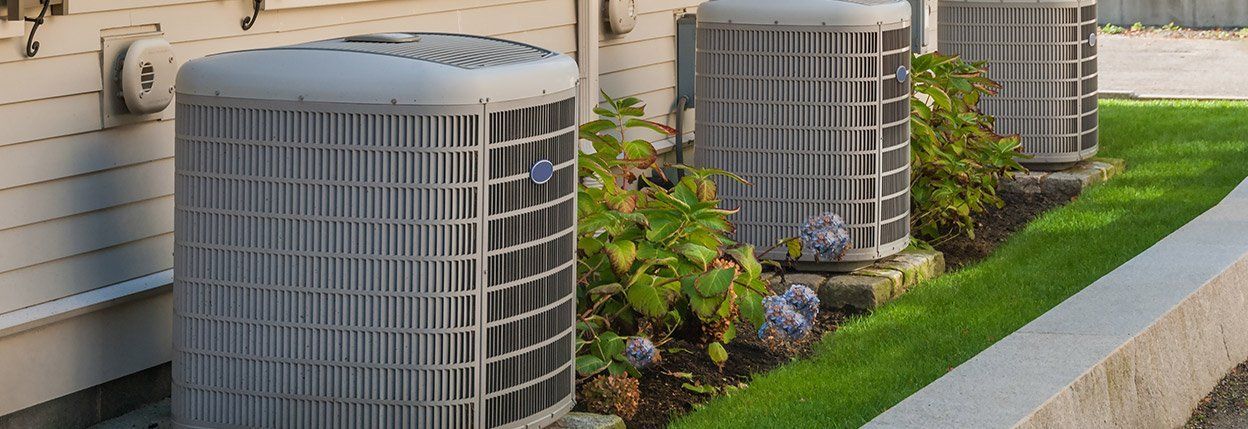
Cooling season has ended throughout much of North America, and some homeowners are wondering whether they should replace their air conditioners before next summer. No matter how diligent you are about maintaining your cooling system, you’ll inevitably have to replace it if you remain in the same home long enough. And budgeting for this expense can be a little tricky due to the numerous variables.
If you anticipate replacing your air conditioner within the next year or so, it’s a good idea to schedule a no-obligation consultation with Bahama air conditioning to get an idea of what it will cost and how you can benefit from a new, energy efficient system. But it’s also helpful to understand the factors that affect how much it will cost to install your new system.
Cooling System Type
While the average North American home has a ducted central air conditioning system, there are all sorts of cooling systems available at various price points. In warmer climates, for example, heat pumps are an attractive option because they cool effectively at a fraction of the operating cost of central air. But the equipment itself is often more expensive than a comparable air conditioner, and the installation typically costs thousands of dollars more.
Ductless mini-split systems may be more or less expensive than ducted central air, depending on how many units are needed. These systems cool individual rooms and are ideal for home additions and multi-unit buildings. In a small space, a mini-split system may be the most economical option. But if it would take several units to cool a home, it could be more cost effective to choose central air, even if it means installing ductwork.
One cooling system that is often less expensive to install than air conditioning is an evaporative cooler, also known as a swamp cooler. These systems cool homes by circulating air through wet pads, but they only work well in dry climates, and are rarely used outside of the Western United States.
Air Conditioner Size
One of the reasons why you should always work with an experienced, licensed installer is because an air conditioner must be sized to your home. Some contractors may think they’re helping their clients’ homes cool down faster by installing oversized units, but this just invites more problems.
If a unit is oversized, it will cool a home faster than it can dehumidify it, resulting in damp, clammy air. This can even contribute to mold growth. And if an air conditioner is undersized, it will run constantly without ever cooling the home, resulting in discomfort and high energy bills.
The bigger the air conditioner, the higher the equipment cost. But this is no place to go looking for savings -- your home needs the size it needs.
SEER Rating
Because air conditioners lose efficiency with age and manufacturers are always making technological improvements, replacing your air conditioner will almost certainly result in improved energy efficiency. But the size of that efficiency gain has a lot to do with your new air conditioner’s seasonal energy efficiency ratio, or SEER rating.
The SEER rating offers a handy way to compare the efficiency of different air conditioners at a glance. The higher the SEER rating, the more efficient the air conditioner -- and the higher the price.
Ductwork
If a home has existing ductwork, vents and returns, replacing or installing an air conditioner tends to be a straightforward job. But in homes that lack this infrastructure, the cost of installation can be several thousand more. The actual cost will vary based on the unique challenges of duct installation in the spaces you want to cool, but even with a simple installation, there is a lot of labor involved.
Supplemental Systems
Your HVAC system can do more than keep your home cool in the summer and warm in the winter. With indoor air quality systems, you can remove fine particles from your home’s air and make breathing easier for anyone with allergies, asthma or other respiratory conditions. And if you live in an especially dry or damp climate, whole-home humidifiers and dehumidifiers can work alongside your air conditioner and furnace to keep your air healthy and comfortable.
Adding one or more of these systems to your air conditioner installation will increase the cost, but may offer savings compared to installing them separately.
One or Both?
If your furnace is within a few years of its expected lifespan -- about 20 years -- it may make financial sense to replace it at the same time as you replace your air conditioner. Obtain quotes for the replacement of both systems individually and together to find out if you can save by replacing your furnace proactively. Don’t forget to factor in the efficiency gains you can expect from replacing your furnace before winter begins.
Work Quality
There’s no substitute for guaranteed quality when it comes to the systems that keep your home comfortable and safe. It’s important to always choose HVAC technicians who are experienced, licensed and insured. Handymen who lack these qualifications may offer lower prices, but air conditioner installation is no job for amateurs.
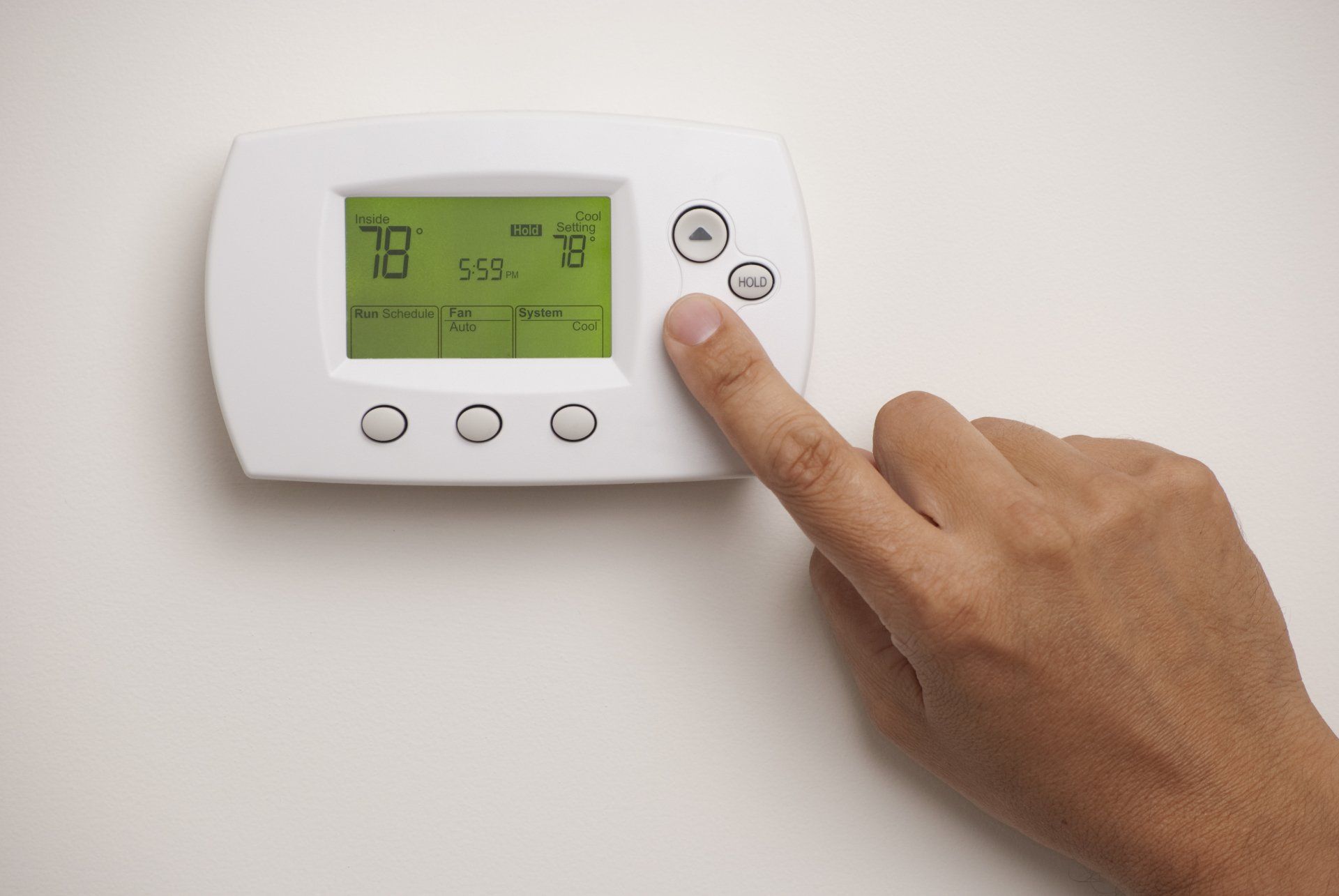
Winterizing your home with a furnace maintenance checklist will maximize the efficiency of your temperature and help curtail HVAC expenses by reducing heat loss.
Many homeowners choose to hire a trusted HVAC company to prepare their furnace for the winter months, while others take the do-it-yourself approach.
We recommend an annual service check by a professional to ensure your system is ready for peak performance. However, if you're planning to take some maintenance steps yourself, the following checklist will help you successfully prepare your furnace for the winter season.
Heating and cooling account for about 48% of the energy use in a typical U.S. home, making it the largest energy expense for most homes. [ source ]
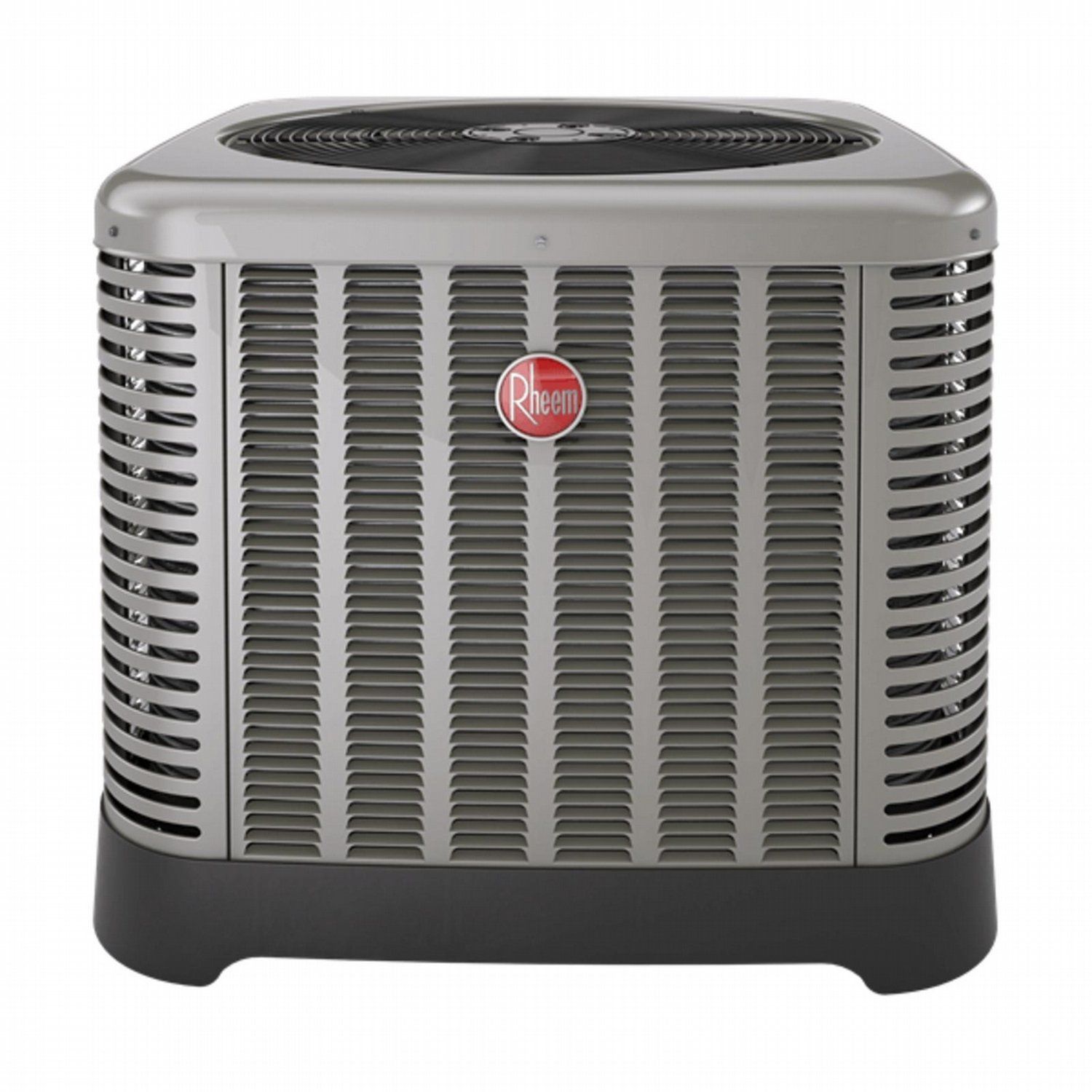
The HVAC systems in buildings should perform very well for controlling any unwanted issues. It is necessary to maintain the heating, ventilation, and air conditioner appliances in good condition for increasing the efficiency levels to a large extent. A ventilation system plays an important role in providing fresh air circulation within a building for enhancing the living standards. Many buildings use heating systems in order to create a warm and comfortable environment during the winter seasons. An air-conditioner is a type of appliance mainly meant for beating the excess heat in a building that occurs in the summer.
It is necessary to diagnose the conditions of HVAC systems in both residential and commercial buildings at regular intervals for enhancing the functions. Since HVAC requires proper maintenance, one should seek support from a leading company for handling complex issues. Another thing is that they help to lower the potential repairs for ensuring peace of mind. Building owners who want to service HVAC should seek from a certified and licensed firm for carrying out activities with high accuracy.
What are the advantages of HVAC services?
Servicing HVAC systems in buildings will result in many benefits and some of them include:
· Saves money on energy bills and fuel costs
· Helps to prevent costly repairs
· Extends the lifespan of appliances
· Ensures smooth operations
· Reduces high power consumption
· Increases the indoor air quality
· Adds more values to buildings
Hiring professional HVAC services
Buildings that are in need of HVAC services should consider working with a professional contractor for carrying out the works with accuracy. Moreover, the technicians appointed by a contractor will have a detailed study of HVAC systems and they show ways for addressing the issues with modern tools. Customers can even know more about the preventive measure with them to minimize risks in advance. It is possible to enhance the safety levels of HVAC systems after servicing the same with an experienced contractor.
Getting solutions for HVAC repairs
HVAC systems in buildings may become defective due to poor maintenance, wrong wiring connection, voltage fluctuations, insufficient power supply, and other factors. Therefore, it is a wise one to find solutions for the repairs immediately for regulating the working conditions.
Resolving air-conditioner repairs
An air-conditioner appliance is the most used appliance in various types of buildings because it helps to keep the surroundings in a cool condition when the temperature is high. A contractor will analyze the reasons for air conditioning repair with the latest applications and will fix them with the most advanced technologies. In fact, the building owners can replace the filters and other parts in an appliance with highly qualified technicians for obtaining optimal results. Furthermore, they will focus more on eliminating the gas emission and other problems efficiently to get more protection in life. Building owners can even handle the appliance smoothly after completing the repair works with a contractor. Apart from that, they can control the loud noises of an air conditioner to witness complete satisfaction.
Heat systems repairing
Furnaces, water heaters, heat pumps, gas-fired space heaters, and electric space heaters are some of the heating systems used in a building. The heating repair will ultimately help to upgrade the conditions of a system with high success rates. In most cases, a contractor provides ways for executing repair works efficiently to run the systems without out any difficulties.
Similarly, it is possible to promote the functions of a water heater in buildings with a contractor that can help to cu-down the electricity bills. Building owners who want to repair the gas heater and other systems can seek assistance from a reputed firm for overcoming complications.
HVAC repair services at affordable rates
The HVAC repair services include different types and they need a special attention for keeping them in a better state. Most contractors aim at rendering services to customers with the latest applications for gaining more advantages. They pave methods for analyzing damages and repairs properly which can help to get the desired outcomes.
A building owner should give more importance to backgrounds, reviews, and testimonials before hiring HVAC services from a company. The costs of HVAC services are an expensive one and some contractors even arrange financial assistance to customers with flexible repayment options. Emergency services are available for the building owners enabling them to manage the severe problems immediately. Customers can get free quotes from a company for hiring services which exactly fit their budgets.
Investing money in HVAC service is a wise decision which can bring more wonders to buildings. However, it is advisable to work with a contractor who has a wide knowledge of repairing and other services. Customers can schedule their appointments online for resolving the issues of HVAC systems to ensure more comfort levels in a building.
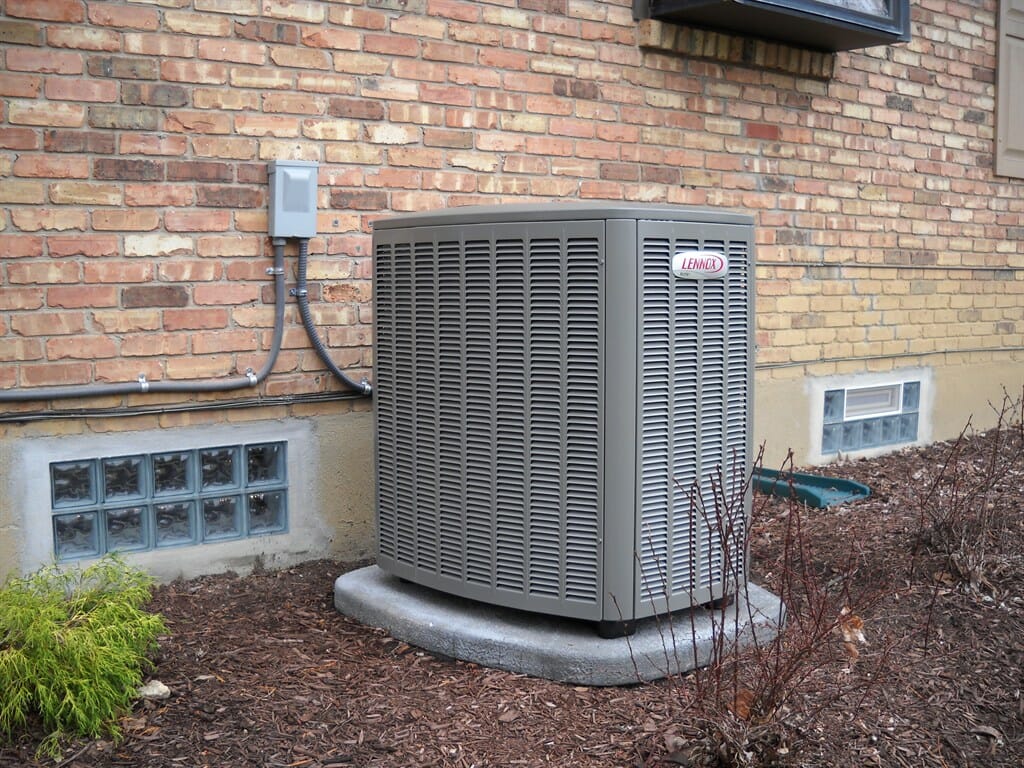
No matter what time of year it is, you want to ensure that your home’s HVAC system is working properly. Whether it’s the summer or winter, your HVAC gets used a lot, so you need to make sure its running properly for optimum use. You’ll want your home to be cozy and warm in the winter and super cool and refreshing in the summer. A fully functional HVAC system will make that happen! Here are some signs that indicate your HVAC unit needs to be serviced by a professional:
1. Is one room hotter than others during the summer?
If you notice that one room is significantly hotter than others when it super hot out can be a telltale sign that your HVAC system needs to be checked. It might be due to duct problems or equipment malfunction, but rooms should all be around the same temperature on one HVAC system. If certain rooms start to have unfavorable temperatures, call in a professional.
2. Are Your Bills Too High?
If you notice a huge jump in your electricity bill, then something in your HVAC system isn’t working as efficiently as it should. You’ll obviously see a rise whenever you use the system more, but a really huge jump warrants a call to an HVAC professional to come out and check the system.
3. Is The System More Than 15 Years Old Or More?
Older systems will start to break down because of typical wear and tear. So if you have a system that’s 15 years old or more, it may be time to get a new HVAC system. Old systems might not function right and won’t provide the right temperatures no matter how much maintenance you provide it.
4. Do Your Hear Random Noises?
If you start to hear popping or rattling sounds, it could be signs that your unit is on the verge of breaking down completely. In fact, hearing any weird or unusual sounds warrants a call to a professional to check the system very soon.
5. Has Your Home Been Experiencing Excessive Dust?
If you’ve noticed more dust than usual in your home, your HVAC system could be the reason. Leaking ducts and clogged air filters can cause a lot of dust, which means it needs to get repaired.
If you’re experiencing any of the above or feel something is off with your HVAC system don't hesitate to give Bahama Air a call!
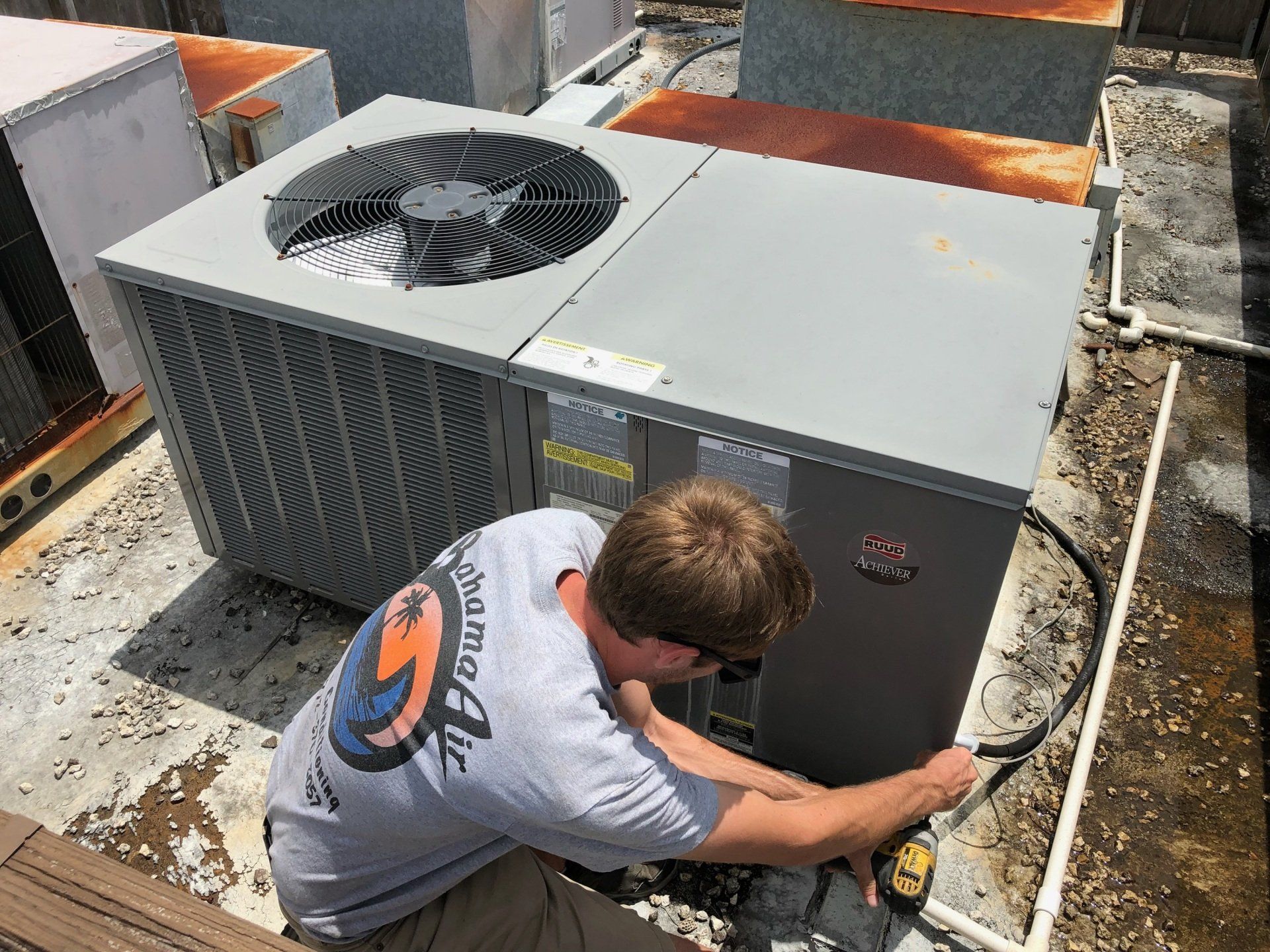
HVAC (Heating, Ventilation and Air
Conditioning) refers to a mechanical system which regulates the environmental
conditions inside a building. Nowadays, it is being installed in every modern
building.
The system is quite a complex one and consists of three basic functioning units– heating, ventilation and air conditioning, as the name itself suggests. During the construction of a building, engineers and contractors estimate the total building space and requirements in order to design and build an appropriate HVAC system for the building. These environmental regulatory systems are a vital part of all new buildings.
The heating component is responsible for providing adequate warm temperatures inside the building. The heaters are used to generate warmth using a liquid medium, such as water, mainly.
The heated water or steam is transported via a piping system, with the use of circulators and radiators that work their way to spread the warm air equally in all the spaces through metal or fiberglass ducts. These ducts play a role in the dispersal of cooled air from the air conditioning system, as well. The whole heating mechanical setup is also referred to as ‘Central Heating.’
Ventilation is the process by which impure air is replaced by clean, oxygenated air throughout the buildings. Any form of impurities, such as dust, excess moisture, smoke, odors, airborne bacteria, heat and carbon dioxide are expelled out of the building in exchange for acceptable indoor quality air.
This is achieved by mechanical(forced) and natural ventilation both. In mechanical ventilation, air handlers, ceiling fans, table/ door fans are the key regulators while natural ventilation makes use of windows, louvres and trickle vents. All contaminants are removed while breathable, pure air is provided via the ventilating system.
For the air-conditioning component, air conditioners are used to provide cooling and humidity control. This could be achieved by internally built central air-conditioning systems or by the use of split air conditioning units with indoor and outdoor coils. They come with dehumidifiers as well, which remove excess moisture from the air and make it more pleasant.
Maintenance of the air conditioner units is quite simple - the foremost step includes changing their air filters regularly, as they collect dust and dirt quite quickly and start to work less efficiently. This leads to a wastage of energy, high priced bills and decreased equipment life.
All these components create an interrelated system which purifies the air, regulates hot and cold temperatures and provides a clean and safe environment to live in. It is ideal for all residential, commercial and non-commercial infrastructure. The cost of installing and maintaining such a system is quite reasonable as well.
However, these systems require regular maintenance, which, could sometimes be a handful. If not taken care of properly, some components of HVAC system may start malfunctioning. Their timely repair is vital for the restoration of a clean environment in their respective buildings. Any sort of air conditioning repair, heating repair or HVAC repair requires expert personnel, trained specifically in this regard.
We are here to provide you with top-tier repairing services, which are not only cost efficient, but also guarantee high quality work for your HVAC system. Our commitment is to leave you content and satisfied, without a doubt. The link to our website is attached below.
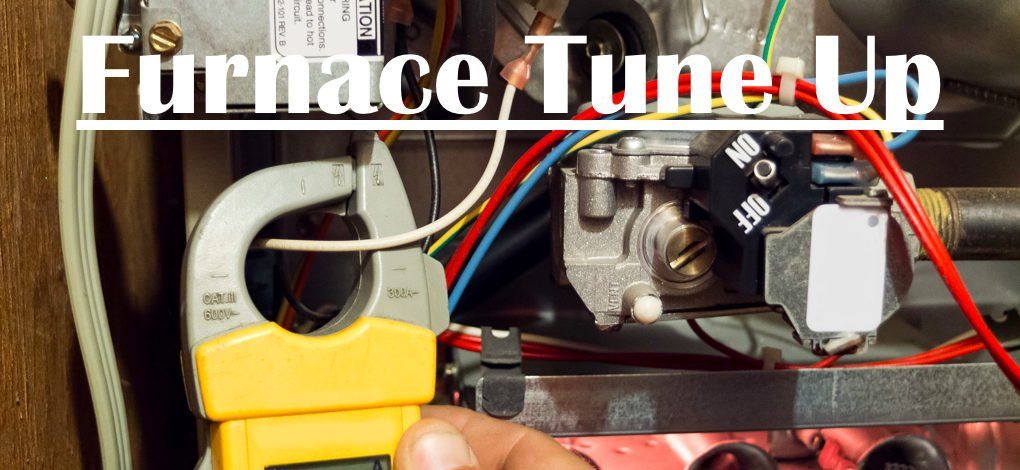
Your furnace may be the furthest thing from your mind in these dog days of summer, but it will be time to flip the thermostat switch before you know it. Have you made your furnace tune up appointment yet? You don't want to put it off, and you definitely don't want to mistake your annual tune up for optional maintenance.
Furnace tune up is important for several reasons:
It helps you save money. Every furnace will lose a little bit of efficiency from year to year, but a neglected furnace will lose it at a much faster rate. If you take care of your furnace, your furnace will take care of your heating costs. What’s more, a tune up gives your HVAC technician an opportunity to find and fix small problems before they turn into big, expensive ones.
It keeps your family safe. As a furnace ages, the risk of cracks in the heat exchanger increases. These cracks can allow deadly carbon monoxide to leak into your home. An annual tune up is a critical safety inspection for this and other problems that could potentially lead to smoke, fire or other dangerous emergencies.
It extends the life of your furnace. The typical furnace lasts around 15 years, but if you don’t get your tune up every year, good luck making it to that benchmark. On the other hand, if you take great care of your furnace, it could serve you for many years beyond that point.
It gets your furnace clean before fall. Have you ever turned on your furnace for the first heating cycle of the season, only to have your home fill up with noxious air? That’s the smell of dust burning off of your furnace’s heating elements. If you get your furnace tuned up before you need to use it, you can avoid this unpleasant autumn ritual.
It ensures proper airflow. Even if your furnace is doing its job right, that warm air won’t get where you want it without proper air pressure. A check on your air handler is also a typical part of furnace tune up, which helps make sure that your HVAC fan is ready for winter.
Your warranty may require it. Did you buy a new furnace within the past few years? If it’s still under warranty, it’s likely that annual maintenance is a condition of keeping that warranty valid. You wouldn’t want to suffer an expensive breakdown only to find that your warranty won’t cover the repair.
It helps you plan for replacement. As we said above, your furnace gets a little less efficient every year. Running your furnace until it breaks down for good might seem like the best way to delay the cost of replacement, but your heating bills could be sky high in that last year or two -- and you don’t want to sit around shivering while you wait for a new installation. Talk to your technician after each tune up to make a plan for proactive replacement, which will give you time to budget for it.
Visit bahama airto make an appointment.
